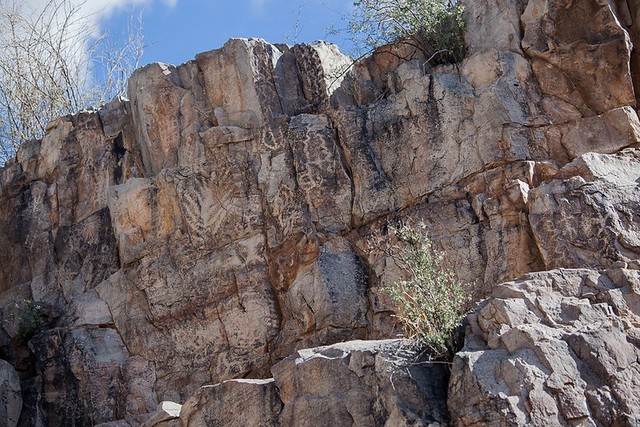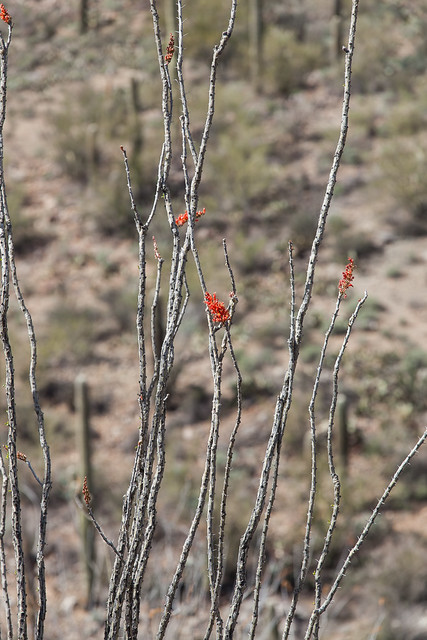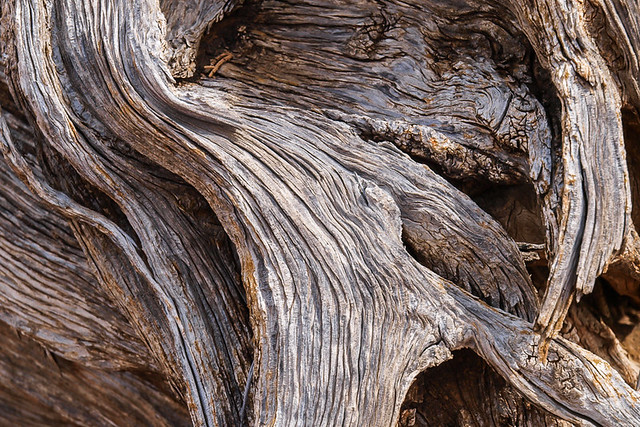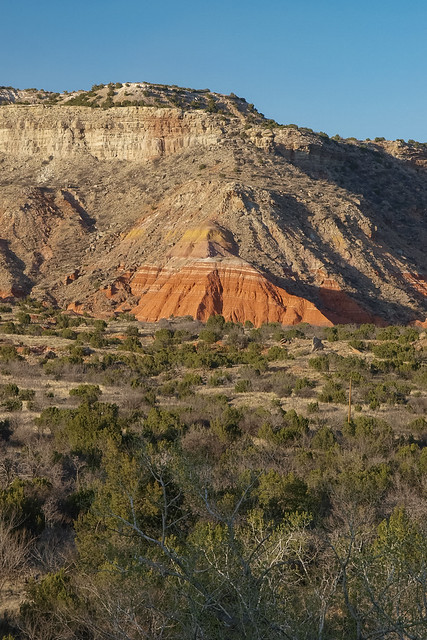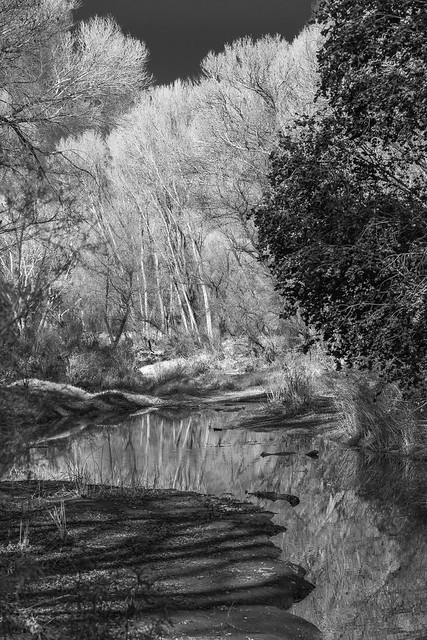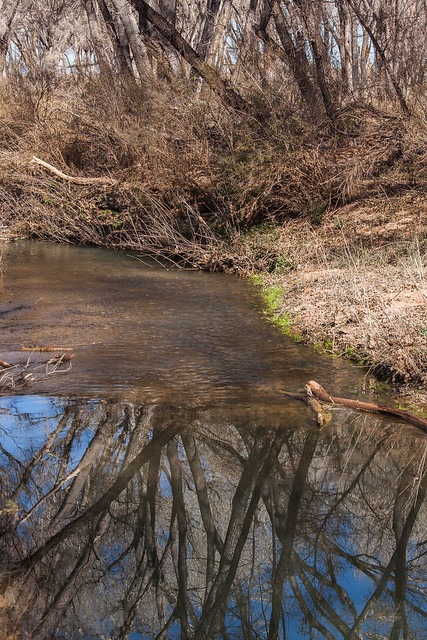Saguaro National Park is all about saguaros!
There are deep canyons, endless desert, blue forever sky, the play of light and shadow, but the biggest draw are the iconic cacti of the Sonoran Desert, the giant saguaros.
It is not often the tip of a cactus arm is easily captured, but on the Kings Canyon hike in Saguaro National Park, the mountain path rises above a stand of mature saguaros.
Kings Canyon is dry on this sunny February day.
But after a heavy rain, raging flood waters can fill this canyon and overflow to the surrounding desert. A rock dam blocks this part of the canyon.
A stand of 50 to 75-year-old cacti, none yet sprouting arms. Typically a cactus will develop arms between 70 and 100 years, and can live 150 to 200 years.
Deep in the canyon, the desert varnish is marked with ancient petroglyphs. Snakes, spirals, human and animal figures are just a few of the many symbols.
Light and shadow is a large part of the desert experience, and even the buildings offer a light/shadow experience. The Visitor Center at the Tucson Unit of Saguaro National Park has a large outdoor ramada.
Stripes and saguaros!




